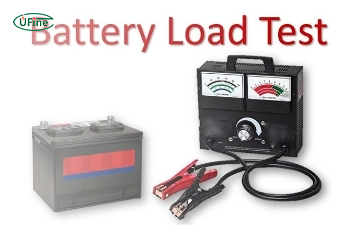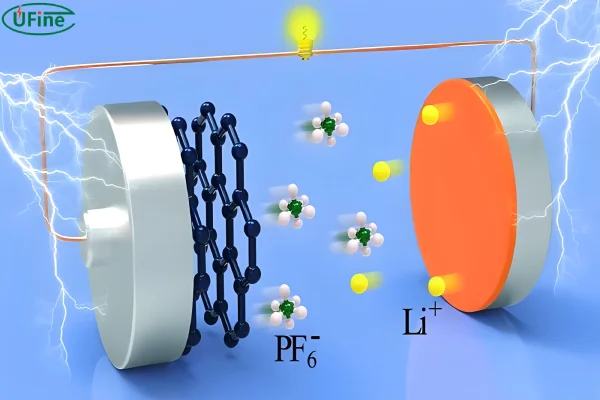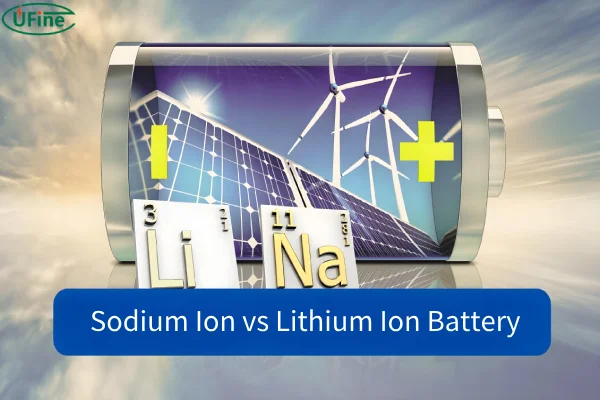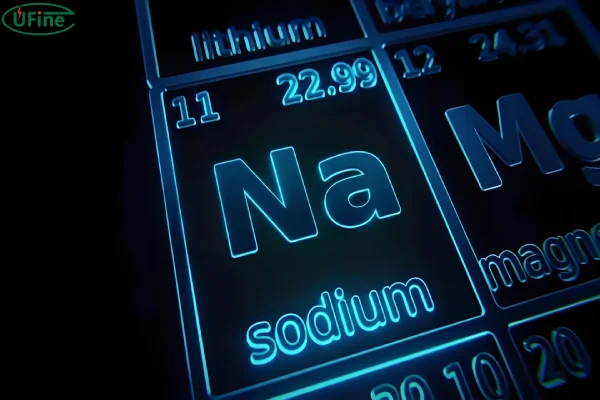
- Part 1. Learn sodium ion battery and lithium ion battery
- Part 2. Sodium ion vs lithium ion battery
- Part 3. Which is better?
- Part 4. Will sodium-ion batteries replace lithium-ion batteries?
- Part 5. What is the biggest advantage of sodium-ion batteries?
- Part 6. Why are sodium-ion batteries not yet widely used?
- Part 7. How long will it take for sodium-ion batteries to be widely used?
- Part 8. Final thoughts
Batteries are the backbone of our modern technological world, powering everything from smartphones to electric vehicles. Among the myriad battery technologies, sodium-ion and lithium-ion batteries are two of the most promising. Each has unique strengths and weaknesses, making them suitable for different applications. This article provides a detailed comparative analysis of sodium-ion and lithium-ion batteries, delving into their history, advantages, disadvantages, and future potential.
Part 1. Learn sodium ion battery and lithium ion battery
Lithium-Ion Battery
The story of lithium-ion batteries dates back to the 1970s when researchers first began exploring lithium’s potential for energy storage. The breakthrough came in 1991 when Sony commercialized the first lithium-ion battery, revolutionizing the electronics industry. Since then, lithium-ion batteries have become the standard for portable electronics, electric vehicles, and renewable energy storage due to their high energy density, long cycle life, and relatively low self-discharge rates. Continued lithium-ion technology advancements have further cemented their dominance in the battery market.
Sodium-Ion Battery
Sodium-ion batteries also originated in the 1970s, around the same time as lithium-ion batteries. However, early sodium-ion batteries faced significant challenges, including lower energy density and shorter cycle life, which hindered their commercial viability. Despite these setbacks, interest in sodium-ion technology persisted due to the abundance and low cost of sodium compared to lithium. Recent advancements in materials science and battery design have reignited interest in sodium-ion batteries. Researchers are now optimistic about their potential as a more sustainable and cost-effective alternative to lithium-ion batteries.
Part 2. Sodium ion vs lithium ion battery
To understand the differences between sodium-ion and lithium-ion batteries, let’s compare them across several critical aspects.
- Raw Material Abundance: Sodium is one of the most common elements on Earth, making sodium-ion batteries less expensive to produce. In contrast, lithium is scarcer and more costly, contributing to the higher price of lithium-ion batteries.
- Energy Density: Lithium-ion batteries have a higher energy density, meaning they can store more energy in a smaller, lighter package. This makes them ideal for portable electronics and electric vehicles that require high energy capacity in a compact form.
- Cost: Due to the abundance of sodium, sodium-ion batteries are generally cheaper to manufacture. This cost advantage could make them more attractive for large-scale applications where cost is a significant factor.
- Safety: Sodium-ion batteries are inherently safer, with a lower risk of overheating and thermal runaway. This makes them a safer option for large-scale energy storage systems.
- Environmental Impact: Sodium-ion batteries have a smaller ecological footprint. Sodium extraction is less harmful to the environment than lithium mining, and sodium-ion batteries are more accessible to recycle.
- Commercial Availability: While lithium-ion batteries are widely available and used in numerous applications, sodium-ion batteries are still emerging. Their commercial availability is currently limited but growing.
- Performance in Cold: Sodium-ion batteries tend to perform better in cold temperatures compared to lithium-ion batteries, which can experience performance degradation in such conditions.
- Cycle Life: Lithium-ion batteries typically have a longer cycle life, meaning they can endure more charge-discharge cycles before their capacity significantly degrades. However, advancements in sodium-ion technology are narrowing this gap.
Comparison chart of sodium ion batteries and lithium ion batteries
| Aspect | Sodium-Ion Battery | Lithium-Ion Battery |
|---|---|---|
| Raw Material Abundance | Sodium is abundant and inexpensive. | Lithium is less abundant and more costly. |
| Energy Density | Lower energy density, storing less energy per unit. | Higher energy density, ideal for compact applications. |
| Cost | Generally cheaper due to plentiful materials. | More expensive due to limited lithium supply. |
| Safety | Less prone to overheating and thermal runaway. | Can overheat and catch fire if not managed properly. |
| Environmental Impact | More environmentally friendly and easier to recycle. | Lithium mining can be environmentally damaging. |
| Commercial Availability | Emerging technology with limited availability. | Widely available and used in many applications. |
| Performance in Cold | Better performance at lower temperatures. | Performance can degrade in cold conditions. |
| Cycle Life | Improving, but generally shorter than lithium-ion. | Long cycle life, suitable for long -term use. |
Part 3. Which is better?
Determining which battery is better depends heavily on the application. Let’s delve deeper into the scenarios where each type of battery excels.
Lithium-Ion Batteries
If you need a battery with high energy density for portable electronics like smartphones, laptops, or high-performance electric vehicles, lithium-ion batteries are the better choice. Their ability to store a large amount of energy in a compact form factor makes them ideal for these applications. Additionally, their longer cycle life means they can endure more charge and discharge cycles, providing longevity and reliability.
Sodium-Ion Batteries
On the other hand, if cost, safety, and environmental impact are your primary concerns, sodium-ion batteries might be more suitable. They are particularly advantageous for large-scale energy storage systems, such as those used in renewable energy installations. Their lower cost and improved safety profile make them a compelling option for grid storage and other applications where space and weight are less critical. Moreover, their better performance in cold temperatures can be beneficial for outdoor or unheated environments.
Part 4. Will sodium-ion batteries replace lithium-ion batteries?
It’s unlikely that sodium-ion batteries will completely replace lithium-ion batteries. Instead, they are expected to complement them. Sodium-ion batteries could take over in niches where their specific advantages—such as lower cost, enhanced safety, and better environmental credentials—are more critical. For example, in grid storage applications and possibly in low-range electric vehicles, sodium-ion batteries could become the preferred choice. However, for high-energy applications like smartphones and high-performance EVs, lithium-ion batteries will likely remain dominant due to their superior energy density.
Part 5. What is the biggest advantage of sodium-ion batteries?
The biggest advantage of sodium-ion batteries is their cost-effectiveness. Sodium is abundantly available and inexpensive to extract, which translates to lower production costs for sodium-ion batteries. This makes them an attractive option for applications where cost is a significant concern, such as large-scale energy storage solutions. Additionally, their inherently safer chemistry reduces the risk of fires and explosions, further enhancing their appeal for such uses.
Part 6. Why are sodium-ion batteries not yet widely used?
Since sodium-ion batteries have so many advantages, why are sodium-ion batteries rarely seen on the market?
Several factors contribute to the limited current use of sodium-ion batteries:
- Lower Energy Density: Sodium-ion batteries still lag behind lithium-ion batteries in terms of energy density, making them less suitable for high-energy applications.
- Shorter Cycle Life: Although improvements are being made, sodium-ion batteries typically have a shorter cycle life compared to their lithium-ion counterparts.
- Emerging Technology: Sodium-ion battery technology is still in the development phase. Many technical challenges need to be addressed before they can be mass-produced.
- Market Entrenchment: Lithium-ion batteries have a well-established market presence with extensive manufacturing infrastructure and supply chains, making it difficult for new technologies to compete.
Part 7. How long will it take for sodium-ion batteries to be widely used?
The widespread adoption of sodium-ion batteries will depend on ongoing research and development. Significant advancements are needed to improve their energy density and cycle life. If these technical challenges are addressed, and assuming the establishment of efficient manufacturing processes, sodium-ion batteries could become more prevalent within the next 5 to 10 years. Their adoption will also be driven by market demands for safer, cheaper, and more environmentally friendly energy storage solutions.
Part 8. Final thoughts
In summary, both sodium-ion and lithium-ion batteries have their own sets of advantages and disadvantages. Lithium-ion batteries excel in applications requiring high energy density and long cycle life. In contrast, sodium-ion batteries offer cost-effectiveness, improved safety, and better environmental sustainability, making them suitable for large-scale energy storage and other specific applications. While sodium-ion batteries are unlikely to completely replace lithium-ion batteries, they hold significant potential to complement and expand the range of energy storage solutions available in the market.
Related Tags:
More Articles

Battery Load Test: A Comprehensive Guide
Step-by-step battery load test guide for car, solar & industrial use. Learn how to load test a battery, interpret voltage charts, and avoid common mistakes.
The Comprehensive Guide to Battery Balancing and Battery Balancer
Discover how battery balancers improve lithium battery performance, lifespan, and safety. Learn types, functions, and tips to choose the right balancer.
What Is the Best Voltage for a Chainsaw Battery?
Compare 12V-80V chainsaw batteries for light pruning, medium firewood, and professional cutting. See best battery chainsaw with runtime charts and safety tips.
Lithium VS. Alkaline Batteries: A Comprehensive Comparison
Lithium batteries last 3–7× longer than alkaline and perform better in cold weather. Compare lifespan, cost, safety, and best uses to choose the right battery.
Comparing Lithium-Sulfur and Lithium-Ion Batteries: Which is Right for You?
Compare lithium-sulfur (Li-S) and lithium-ion batteries on energy, lifespan, cost, safety, and applications. Best choice for drones, EVs, and electronics.





